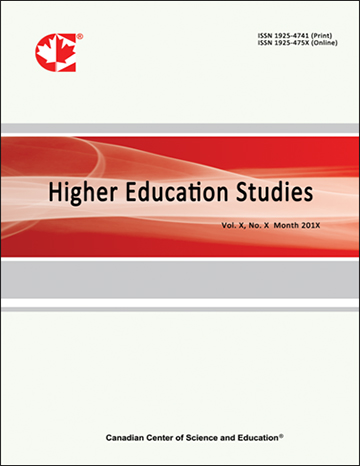Quality in Higher Education: Defining the Conceptual Contents and their Relative Predominance
- Anastasia Papanthymou
- Maria Darra
Abstract
The purpose of this study is to investigate the conceptual content of the term “quality” in higher education, as it emerges from the descriptions and discussions of authors, researchers, and experts in 22 scientific publications. The analysis of the qualitative data is based on the methodology of grounded theory. From the analysis, 21 major dimensions or characteristics of quality in higher education emerged due to their high frequency of occurrence, were subdivided into five broader categories: “learning environment”, “learning content”, “processes”, “students”, and “teachers”. According to the main findings, from the "learning environment" category, the dimension concerning psychosocial elements predominated in the literature. From the category "learning content", two dimensions prevailed (student-centred teaching and learning) and the dimension concerning taking an interest in and caring about students. From the "processes" category, the dimension concerning assessment prevailed. In the category "students", the dimension of improved learning outcomes was the most frequently observed, and finally, from the "teachers" category, two dimensions prevailed over the others, one concerning pedagogical skills and the other termed skills: emotional, management, reflection.
- Full Text:
 PDF
PDF
- DOI:10.5539/hes.v12n4p18
Index
- AcademicKeys
- CNKI Scholar
- Education Resources Information Center (ERIC)
- Elektronische Zeitschriftenbibliothek (EZB)
- EuroPub Database
- Excellence in Research for Australia (ERA)
- Google Scholar
- InfoBase
- JournalSeek
- Mendeley
- Open Access Journals Search Engine(OAJSE)
- Open policy finder
- Scilit
- Ulrich's
- WorldCat
Contact
- Sherry LinEditorial Assistant
- hes@ccsenet.org
